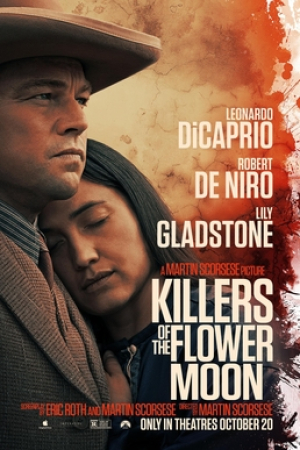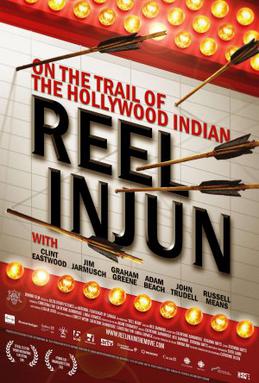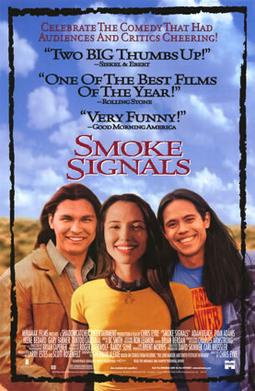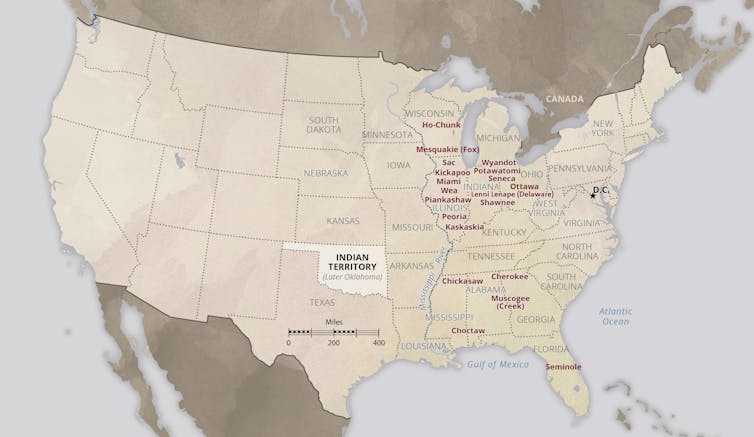
Becoming the Backdrop: The Oppression of Native Americans in Hollywood cinema, and 'Killers of the Flower Moon'
It did well, grossing $157 million worldwide as well as receiving critical acclaim, with praise for Scorsese's direction, the screenplay, production values, editing, cinematography, musical score, and cast performances, especially DiCaprio, Gladstone, and De Niro. It was also nominated for ten Academy Awards, including Best Picture; seven Golden Globe Awards, including Best Motion Picture – Drama, and with Gladstone winning Best Actress; nine British Academy Film Awards; and three SAG Awards, with Gladstone winning Best Actress."
The story revolves around Ernest Burkhart (Leonardo DiCaprio) who comes to live with his brother and uncle William King Hale on Hale's reservation ranch after World War I. Hale is a reserve deputy sheriff and cattle rancher who poses as a friend of the Osage while at the same time secretly organising the killing of the Osage through multiple different means such as shooting, poisoning, and even blowing up a house. Ernest Burkhart marries Mollie Kyle, an Osage whose family owns oil headrights.

Lily Gladstone's portrayal of Mollie Burkhart garnered critical acclaim, earning her a nomination for the Academy Award for Best Actress
Mollie decides to go to Washington and asks President Calvin Coolidge for help in solving the murders. Bureau of Investigation (the eventual FBI) Agent Thomas Bruce White Sr. and his assistants are sent to Oklahoma to find out who is behind the murders. White finds out the truth and persuades Ernest to confess his involvement and testify against his uncle Hale. Hale and Ernest are sentenced to life imprisonment but both were paroled after years of incarceration, despite Osage protests to the parole board.
Killers of the Flower Moon has themes which differ from traditional Westerns in that the 'cowboys' are focused on oil production and resent the community that owns the rights to oilfields. It is also different in that law and order is controlled not by the local sheriff [who is corrupt in this case] but by the federal state who sends in its agents to find out what is going on. This twentieth century concept of the developing power of the state taking over from the nineteenth century local power of the sheriff is only the start. The newly developed FBI launches into containing local criminality with all the power and forces of the federal state. The FBI went on to be involved in the capture and deaths of numerous infamous mobsters of the day, including John Dillinger, Pretty Boy Floyd, Baby Face Nelson and Machine Gun Kelly.
The Osage case is also depicted in the 1959 American crime drama film, The FBI Story, showing how the FBI developed from a detective agency to an enforcement agency with the statutory authority to carry guns and make arrests:
The FBI was compelled to investigate after one of the [Osage] murders was committed on federal government land. The FBI forensics laboratory ties the doctored wills and life insurance policies of the murder victims to a local banker, Dwight McCutcheon, with the typewriter that he used.
In Killers of the Flower Moon Martin Scorsese had originally intended that Leonardo DiCaprio would play the FBI agent who solves the crimes. However screenwriter Eric Roth began to fear the story underplayed the experience of the Osage people and repeated tired tropes. "We didn't want to go much further with this Great White Hope saving Native Americans," says Roth. This fear of stereotyping led to Scorsese meeting with members of the Osage community in Pawhuska, Oklahoma, including Chief Geoffrey Standing Bear, the principal chief of the Osage Nation.
Hollywood has had a long history of depicting Native Americans in cinema. The Cree filmmaker Neil Diamond covers a century of the portrayal of North American Natives in his documentary Reel Injun:
Reel Injun explores the various stereotypes about Natives in film, from the noble savage to the drunken Indian. It profiles such figures as Iron Eyes Cody, an Italian American who reinvented himself as a Native American on screen. The film also explores Hollywood's practice of using Italian Americans and American Jews to portray Indians in the movies and reveals how some Native American actors made jokes in their native tongue on screen when the director thought they were simply speaking gibberish.

Reel Injun film poster
Scorsese was obviously aware that to be taken seriously today he would have to involve the Osage Nation in the making of this film. This story involved an extraordinary situation for Native Americans anywhere in North America, as the Osage directly benefited from the natural resources of their territory.
"I was anxious," Scorsese says. "I knew that if I could not gain their trust, then there's no sense in making the film. As a European American, a Sicilian American, I may have natural limitations, and I hoped that they would forgive that. But they had to know it was coming from the right place and not a surface revisionism, which is simplistic. I wanted something really, really complex that deals with humanity." [...] "One of the people in the room said, 'You have to be very careful. You're putting words in the mouths of people that ... These are real people to us. They're part of our families.' "
The depiction of the Native Americans from the early cinematic beginnings emphasised violence, vacillating from violence to be admired to violence to be feared, depending on the ideological needs of each decade in the twentieth century. When America was under internal or external threat then the violence of the 'Injun' was to be feared. When America needed a strong identity, a powerful role model of the fearless warrior, then the Native American was to be admired. In either case the violence provides catharsis for the colonising power. Even though it is the Native Americans that are being depicted, their needs are secondary.
Many white actors played Native American roles and had no concern for Native American opinions about their roles. "White people playing native roles? I love it, 'cos it's funny!" says Cheyenne/Arapaho filmmaker, Chris Eyre, in Reel Injun. Native Americans were played by Burt Lancaster, Charles Bronson, Burt Reynolds, Elvis Presley, Boris Karloff, Anthony Quinn, Chuck Connors, Daniel Day-Lewis, Sylvester Stallone, Pierce Brosnan, Johnny Depp and others.
In Smoke Signals, a 1998 coming-of-age comedy-drama film directed by Chris Eyre, there is an awareness of the Romanticist portrayal of the Native American as a hero for white audiences. Similarly, white heroes were seen as belonging to the colonial cultural mindset. In Smoke Signals, Thomas Builds-the-Fire argues: "Nobody can help us. No Superman. No Batman. No Wonder Woman. Not even Charles Bronson, man." (Reel Injun)

Killers of the Flower Moon tells a Native American story and is even populated with Osage actors - yet it is still a white man's story, paid for and dominated by, white actors. While it is difficult for any group to tell their story, especially in an expensive medium like cinema, it is even more difficult to imagine the dominant group/oppressor telling your story. Can we expect the British to make radical films about Irish uprisings against British rule? Can we expect the Israelis to make films about the Palestinian struggle against settler land grabs?
The natives were fleshed out as characters, allowed to be seen as more complete people. They weren't just warriors; they weren't just peaceful. There was a very sensitive and sympathetic approach. It doesn't erase the fact that at it's core the film is not a native movie. It is still a movie made from the outside of us and it's about us and is meant to be sympathetic towards us. But, it isn't us. It's a story about a white guy. And, Indians are the T and A, but it gets promoted as being about native people or Indians, but it's not, really. We're just backdrop. (Reel Injun)


